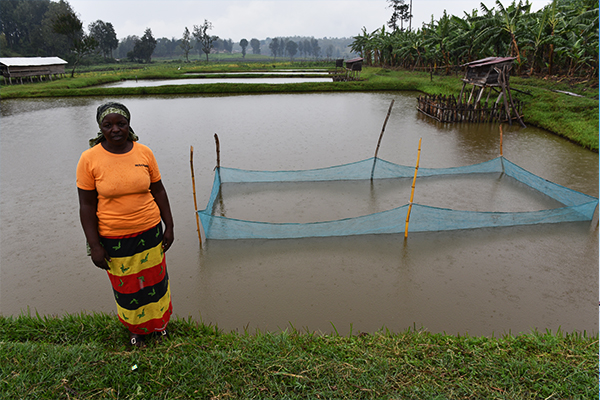COFI 36 OF FAO ADOPTS GUIDELINES FOR SUSTAINABLE AQUACULTURE
The Committee on Fisheries (COFI) of the Food and Agriculture Organization of the United Nations (FAO) has adopted the Guidelines for Sustainable Aquaculture (GSA), which have been prepared to support efforts at all levels for enhancing the important role of aquaculture towards the eradication of hunger and poverty and to support socioeconomic development, in full respect of the environment, biodiversity and ecosystem functions.
The GSA are a major milestone and a collective achievement by FAO and its Members, underscoring the global recognition of the vital role of aquaculture and the need for its continued sustainable development for the sake of current and future generations.
Why we need the GSA
Humans have been farming fish and other aquatic foods for millennia, but aquaculture as we know it today is a relatively new industry that has grown rapidly in recent decades, fuelled by scientific progress, technological innovations, investment, and a rising global demand for aquatic foods.
Aquaculture is one of the fastest growing food sectors and remains essential in a world where 735 million people go to bed hungry every day and over three billion people cannot afford a healthy diet.
With many capture fisheries at capacity or declining because of overexploitation, pollution and climate change, aquaculture has become a vital activity, now providing over half of the world’s fish, shellfish, molluscs, crustaceans and other aquatic animals for human consumption.
When done right, aquaculture can provide healthy, nutrient-rich, and climate-friendly food for an expanding world population expected to reach 9.7 billion by 2050. However, as with all food production sectors, this rapid growth has exposed challenges to the sustainability of aquaculture and raised concerns about its potential negative impacts.
It is therefore crucial to steer this powerful, dynamic, and constantly evolving sector towards the future we want, avoiding the negative impacts which can be caused by unsustainable practices. The FAO Guidelines for Sustainable Aquaculture are here to help.
What they are
The GSA are a set of shared and agreed principles and practices that all countries can use to transform their domestic aquaculture industries while collectively building a future in which the sector will be synonymous with food security and nutrition, equitable livelihoods, restored ecosystems, and climate resilience. They have clear objectives, aiming to promote economic, social, and environmental sustainability, as well as animal health and welfare. Overall, they present a comprehensive and adaptable framework designed to address the challenges posed by the rapid growth of the aquaculture sector and support its sustainable expansion and intensification.
Importantly, they bring unity and a shared vision where there was a fragmentation of approaches, initiatives, and interventions at the global, regional, national and local levels.
“The Guidelines were drafted through an inclusive consultative process at the request of FAO Members, who wanted a shared understanding and clear direction to develop sustainable aquaculture in their countries, in line with Article 9 of the Code of Conduct for Responsible Fisheries and the 2030 Agenda for Sustainable Development,” says FAO Senior Aquaculture Officer Matthias Halwart.
“Their adoption by COFI is a major achievement by and for the global aquaculture community. They are a tool that can be used anywhere in the world to improve the lives and livelihoods of people who produce and depend upon aquatic foods, in harmony with their surrounding ecosystems.”
FAO and the GSA
Adopted by Members, the GSA now inform the programmatic work of FAO in implementing the FAO’ Blue Transformation roadmap, ensuring that all aquaculture projects and programmes are pulling in the same direction.
FAO is working towards mainstreaming the GSA in global, regional, and national policymaking in an open and transparent way, recognizing that governance and planning form the foundation of sustainable aquaculture, promoting principles like accountability, equity, and efficiency.
“In practice, this might mean enacting new legislation to promote restorative aquaculture in a degraded habitat, fielding incentives for the industry to decarbonize its production cycle, launching a government programme to connect rural women and youth with green fish farms, or supporting small-scale producers to obtain international certifications so they can command good market prices,” explains FAO Senior Fishery Officer KwangSuk Oh.
“These are just examples. FAO’s job is to help countries and regional bodies align their legal frameworks with the GSA, and to provide technical support as needed.”
FAO is also working to advance technology and innovation to make aquaculture more efficient, without wasting precious resources and without harming surrounding ecosystems.
“This includes seed and feed, adaptation to climate change, interactions with global aquatic biodiversity and waste management, with farms designed around the concept of circularity,” explains FAO Senior Fishery Officer Graham Mair.
“It is essential to ensure that the expansion of aquaculture into new areas is done sustainably and with respect for the environment.”
Vision and mission of the GSA
The vision underlying the new Guidelines is of an aquaculture sector that contributes significantly to a world free from hunger and to the equitable improvement of the living standards of all actors in its value chains, including the poorest.
The GSA are global, voluntary, adaptable, and complementary to existing laws and regulations. They rest on the principles of sustainability, environmental stewardship, non-discrimination, the rule of law, equity and equality, participation, transparency and accountability, and the use of the Ecosystem Approach to Aquaculture (EAA).
All countries and stakeholders can use the GSA to advance towards more productive, efficient, inclusive, resilient, climate-smart, and socially and environmentally responsible agrifood systems, in which aquaculture fulfils its huge potential to meet the ever-growing demand for safe, nutritious, accessible, and affordable aquatic foods.

